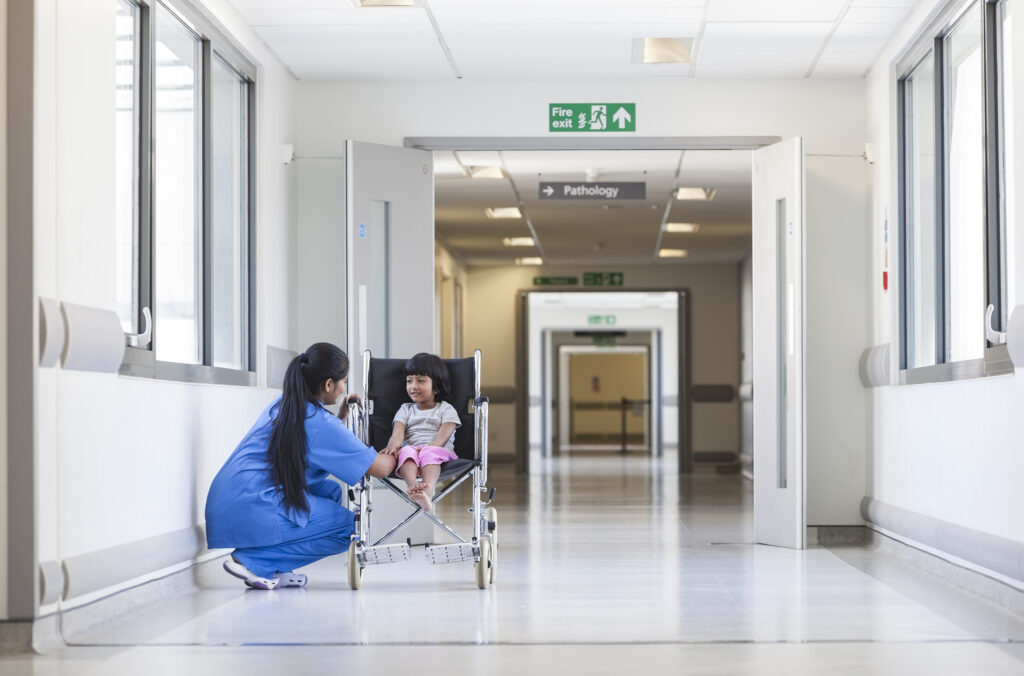News & Events
An AI-enhanced system for pre and post-surgery patient flow management
31 - MarchAmong the tools that the Smart Hospital Care Pathway (SHCP) Engine will provide, there is one specifically focused on hospital management that will propose slot recommendations for elective and urgent surgical procedures and assess post-surgery patient deterioration
Barcelona Children’s Hospital Sant Joan de Déu will implement a pilot program this summer aimed at cardiac pediatric patients. This scheduling system will recommend the timing and order of the procedures based on the resources available, predicted number of new urgencies, predicted availability of postoperative care resources, individual patient risk and need for care. In addition, the scheduling tool aims to enhance elective planning to enable predictions of uncontrollable factors like the upcoming urgent procedures, the decision-making process concerning the optimal time for patient discharge, and patient surveillance protocols to anticipate critical events and improve patient workflow.
Their hospital performs around 400 yearly cardiac surgical interventions (200 surgeries + 200 catheterisms). We have interviewed the core team in charge of the pilot implementation to know how this technology will improve hospital management in their case.

What is the current organization system for pre and post-surgery procedures at the hospital?
At Barcelona Children’s Hospital Sant Joan de Déu, there is an established protocol for patients prior to surgery. The week before the procedure, the cardiology nurse case manager contacts the family to inform them of the date of surgery, and hospital regulations, and to answer any questions the family may have. This allows the team to detect concerns, and any doubts with medications, or assess whether other hospital specialists should be aware of the procedure.
A pre-operative analysis is performed, and the patient is admitted several hours before the procedure. The post-operative protocol, on the other hand, consists of admission to the ICU until the stabilisation of the patient is confirmed. Subsequently, patients are transferred to the inpatient cardiology floor, where they remain under continuous observation and monitoring. When patients meet the stability criteria for going home, the patient is discharged, with visits to outpatient clinics scheduled to ensure post-op follow-up.
How do you plan to optimise the hospital resources and the healthcare professionals’ knowledge with the AICCELERATE implementation?
The implementation of the pilot will allow a reduction in hospital length-of-stay, both in the ICU and on the floor. It will help healthcare professionals assess whether the location of the patient’s admission is appropriate, favouring the transition of patients from the ICU to the floor if they are stable or vice versa; if there is an episode of clinical worsening, this tool will predict whether a new ICU readmission is warranted
Which will be the key improvement through AICCELERATE?
The continuous stratification of patient risk will allow practitioners to act early and minimize adverse events.
From the patient’s perspective, what will be the benefit of using an AI-based development? And from clinicians’ perspective?
The combination of medical judgment with AI support will mean greater confidence and peace of mind that the hospital system is offering patients all the technological benefits currently available, knowing that behind the technology are highly trained medical professionals always ready to provide their medical judgment.
From a clinical point of view, having technological support for routine clinical practice is a double security system to avoid adverse events in patients.
How are the users (clinicians, nurses, administrative personnel, etc) participating in the current development of the solution?
Clinical and nursing staff who are familiar with the project have been appointed and are assisting the engineering team by resolving any clinical doubts that may arise and informing them of usual clinical practice.
How receptive are the users to the use of Artificial Intelligence in optimizing these processes?
Patients, or more precisely, families when dealing with pediatric patients, are aware that AI is the future, and that it may provide additional help to doctors. So far, all families have been informed and none have refused to participate.
Would you recommend the implementation of this technology in other hospitals?
Absolutely. Helping to improve the comprehensive assessment of patients within hospitals should be an objective that is considered in all hospitals for the ultimate benefit of patients.
_
 The Sant Joan de Déu Research Foundation aims to contribute to the improvement of people’s health and well-being by encouraging, supporting and coordinating research carried out in the Sant Joan de Déu Barcelona Children’s Hospital (HSJD). The Barcelona Children’s Hospital is a private, non-profit 3rd level university hospital. Since 1867, our hospital has been dedicated to comprehensive care for women, children and adolescents, and has become one of the most important specialised paediatric centres in Europe. The hospital has a strong digital transformation strategy to go beyond the walls of the hospital building, the Liquid Hospital. In the AICCELERATE Project, HSJD is leading 2 pilots in pediatric care for Congenital Heart Disease and Palliative Care patient care improvement.
The Sant Joan de Déu Research Foundation aims to contribute to the improvement of people’s health and well-being by encouraging, supporting and coordinating research carried out in the Sant Joan de Déu Barcelona Children’s Hospital (HSJD). The Barcelona Children’s Hospital is a private, non-profit 3rd level university hospital. Since 1867, our hospital has been dedicated to comprehensive care for women, children and adolescents, and has become one of the most important specialised paediatric centres in Europe. The hospital has a strong digital transformation strategy to go beyond the walls of the hospital building, the Liquid Hospital. In the AICCELERATE Project, HSJD is leading 2 pilots in pediatric care for Congenital Heart Disease and Palliative Care patient care improvement.
Similar Posts
 Hospital management optimisation and more personalised patient pathways for pre...
Hospital management optimisation and more personalised patient pathways for pre...
 An intelligent digital service that will improve the care of...
An intelligent digital service that will improve the care of...

